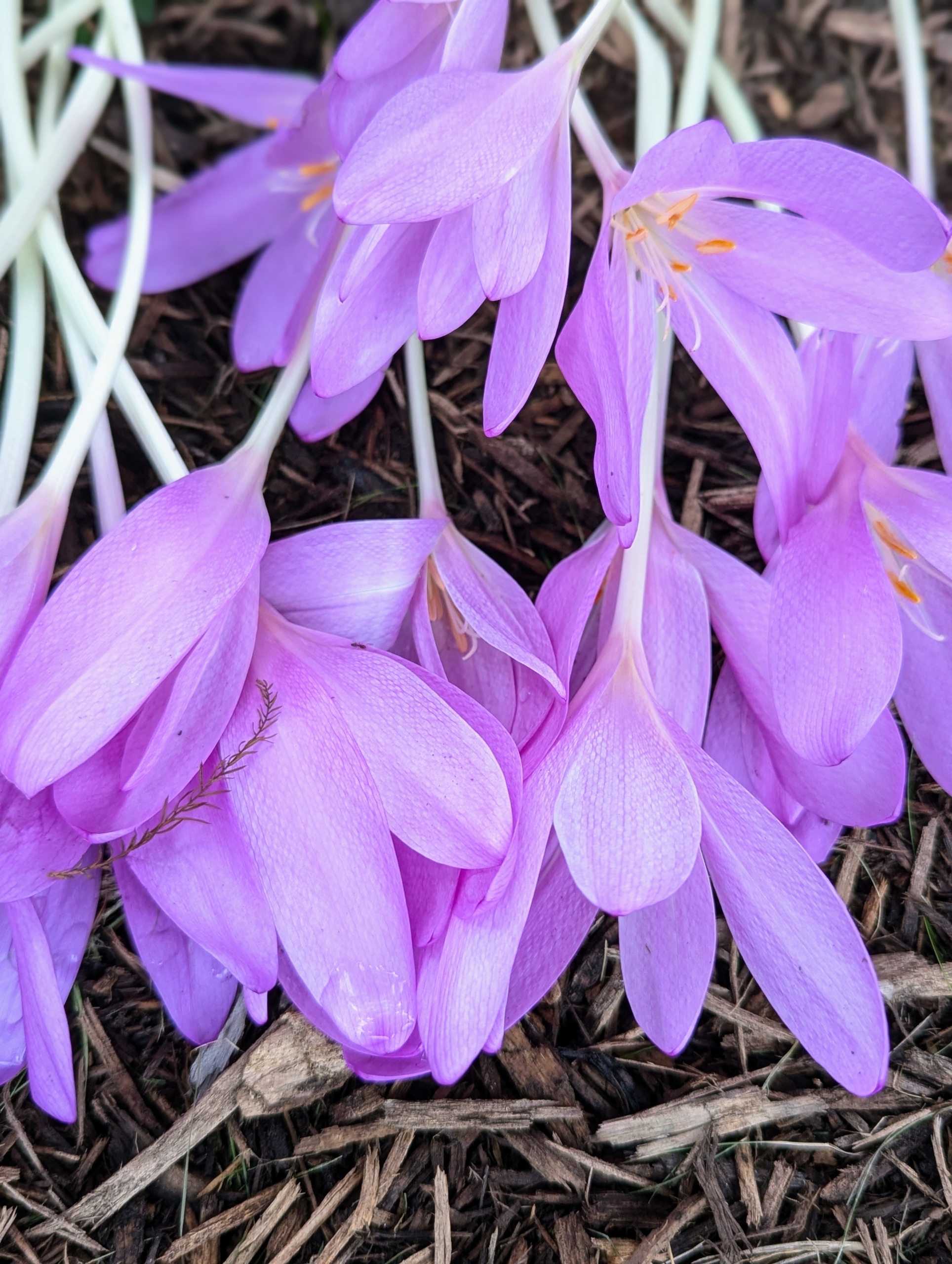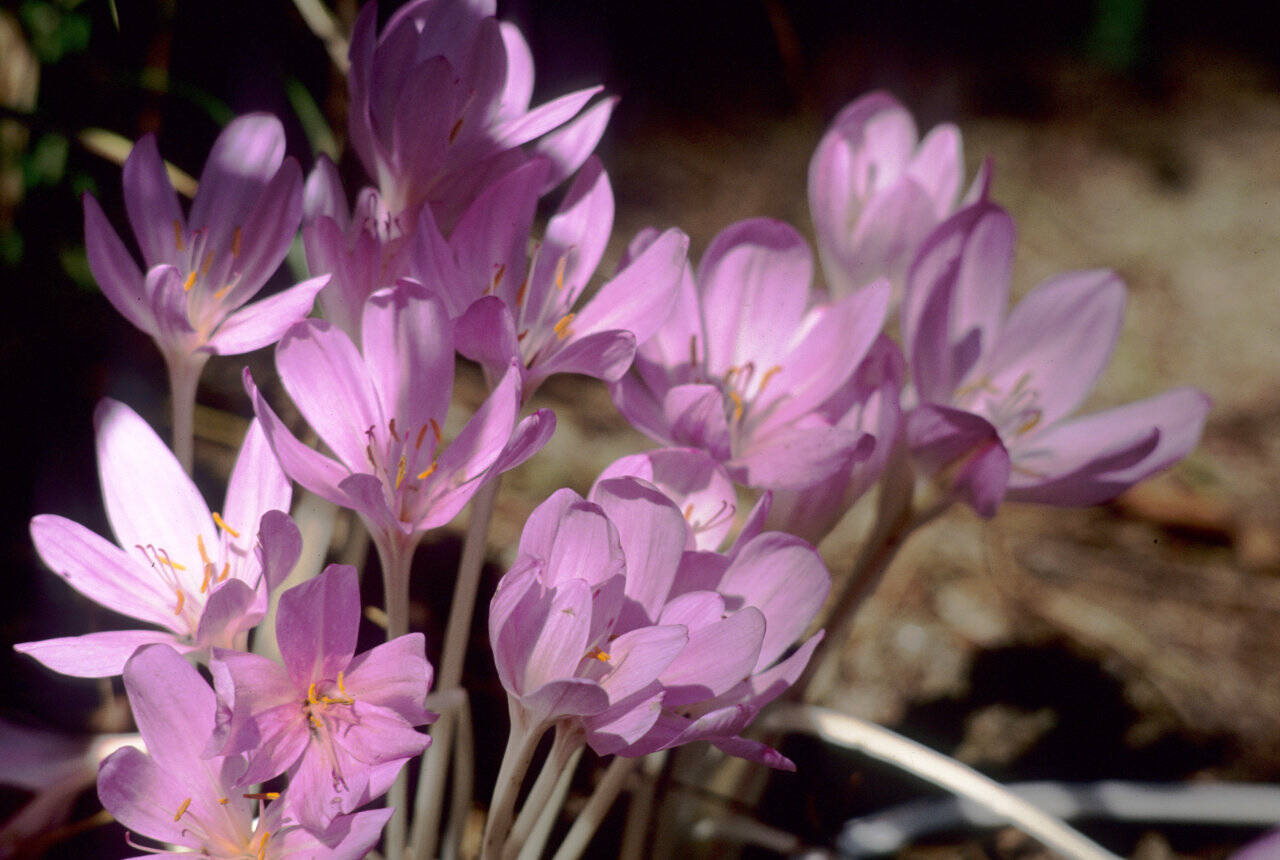How to Grow Naked Lady (Colchicum)

Introduction
Naked Lady (Colchicum) is a fascinating flower that brings unexpected beauty to your garden in autumn. Also known as Autumn Crocus, these plants are famous for their unique growth habit – sending up leafless flowers in fall, which gives them their “naked” nickname, while their foliage appears separately in spring. Despite their common name, they’re not true crocuses but members of the lily family. This guide will walk you through everything you need to know to successfully grow these charming flowers in your garden.
Safety Note: All parts of the Colchicum plant are poisonous, so always wear gloves when handling the bulbs and keep them away from children and pets.
Plant Profile
| Characteristic | Details |
|---|---|
| Plant Type | Perennial bulb (technically a corm) |
| Height | 15-20 cm (6-8 inches) |
| Spread | 10-20 cm (4-8 inches) |
| Flowering Time | September-October |
| Foliage Time | Spring (appears after flowering) |
| Color Options | Purple, pink, white |
| Hardiness | Hardy to -25°F (-32°C) |
When and Where to Plant

Best Planting Time
- August is the ideal month to plant Colchicum corms for autumn flowering
- Plant while corms are dormant, from mid to late summer
Ideal Location
- Dappled shade under deciduous trees is perfect
- Can be naturalized in grass areas
- Front of borders works well
- Avoid windy sites as the delicate flower stems can break easily
Soil Requirements
- Well-draining soil is essential – these bulbs will rot in waterlogged conditions
- Average garden soil with good drainage is perfect
- Rich, fertile soil produces the best results
- Can grow in slightly acidic to neutral soil pH
Planting Instructions

Step-by-Step Planting
- Wear gloves when handling the corms (they’re toxic)
- Dig a hole 8-10 cm (3-4 inches) deep
- Place corm with the pointed end facing upward
- Cover with soil and firm gently
- Spacing: Plant corms 15 cm (6 inches) apart (about 3 bulbs per sq ft)
- Water thoroughly after planting
Container Planting
- Use large pots with excellent drainage
- Select containers deep enough for proper planting depth (at least 20 cm/8 inches deep)
- Use quality potting mix
- Plant at the same depth as in the ground
- Position containers in areas with partial sun
Sunlight Requirements
- Spring growth: Full sun is best for foliage development
- Summer: Partial shade is preferred, especially in hot regions
- Flowering time: Dappled light produces the best blooms
Watering and Care
Watering Schedule
- After planting: Water thoroughly to settle soil
- During active growth: Keep soil moist but not soggy
- Summer dormancy: Reduce watering when foliage yellows and dies back
- Fall flowering: Resume light watering when flowers appear
Seasonal Care
- Spring: Allow foliage to grow and photosynthesize completely
- Summer: Let foliage die back naturally – don’t cut it prematurely as this is when energy is stored in the bulbs
- Fall: Enjoy the flowers! No special care needed
- Winter: No special care required as plants are dormant
Fertilization
- Spring: Apply a light mulch of compost when foliage appears
- No heavy fertilization needed – these plants are generally not heavy feeders
- If soil is poor, a balanced bulb fertilizer can be applied in early spring
Propagation Methods

Division
- Colchicum will naturally multiply over time
- After 3-4 years, you can divide the clumps
- Best time for division: Summer after foliage has died back
- Carefully separate offsets (baby corms) from mother bulb
- Replant immediately at same depth as original
From Seed
- Seeds can be collected when mature
- However, growing from seed requires patience as it can take 3-6 years to see flowers
Common Problems and Solutions
Pests
- Slugs and snails: Can damage emerging shoots and flowers
- Solution: Use organic slug control methods
- Aphids: May occasionally attack foliage
- Solution: Wash off with water jet or use insecticidal soap
Diseases
- Bulb rot: Caused by excessive moisture
- Prevention: Ensure well-draining soil and avoid overwatering
- Mold: Can develop in damp conditions
- Prevention: Provide good air circulation and proper spacing
Popular Varieties to Try

Single-Flowered Varieties
- Colchicum autumnale: The classic species with lilac-pink flowers
- Colchicum autumnale ‘Album’: Pure white flowers with clean appearance
- Colchicum speciosum: Large flowers with purple-pink coloring
- Colchicum speciosum ‘Album’: White flowers with green throats
Double-Flowered Varieties
- Colchicum ‘Waterlily’: Double pink-purple flowers resembling water lilies
- Colchicum ‘Lilac Wonder’: Vibrant pink-purple simple flowers
Companion Planting
Colchicum works beautifully with:
- Low-growing perennials that hide the spent foliage in summer
- Spring bulbs like daffodils that bloom when Colchicum’s foliage is active
- Ground covers that don’t compete too aggressively
- Small shrubs that provide partial shade
Seasonal Timeline
- Spring: Foliage appears and develops
- Late Spring/Early Summer: Foliage begins to yellow and die back
- Summer: Plant appears dormant with no visible growth
- Late Summer/Early Fall: Leafless flowers emerge unexpectedly
- Fall: Full flowering period
- Winter: Dormancy continues underground
Tips for Success
- Be patient – newly planted corms may not flower well the first year
- Don’t mow areas with Colchicum until foliage has completely died back
- Mark locations where bulbs are planted to avoid accidentally digging them up
- Plant in groups of at least 3-5 bulbs for the most impressive display
- Try forcing bulbs in water – they’ll bloom without soil, making interesting indoor displays
- Consider deer resistance – Colchicum is generally avoided by deer due to toxicity
Conclusion
Naked Lady (Colchicum) brings unique charm and interest to the autumn garden when few other plants are flowering. Their unusual growth habit of producing leafless flowers in fall adds an element of surprise. With proper planting and minimal maintenance, these resilient bulbs will reward you with beautiful blooms for many years, multiplying and naturalizing in ideal conditions.
Remember that while these plants require very little maintenance, their ability to thrive depends on meeting their basic needs for well-drained soil and appropriate light conditions. With these fundamentals in place, you’ll enjoy the delightful surprise of these “naked” blooms emerging from bare soil each autumn. Happy Gardening….







